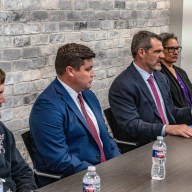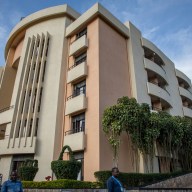Metro Workology is focusing on careers and education in the engineering sector for the month of March to celebrate National Engineering Month. Check back every Wednesday.
The theme of National Engineering Month 2010 is “design the future,” and experts say the future is getting very big and very small.
John McLaughlin is a professor of geomatics engineering at the University of New Brunswick. In 2005, he chaired a Canadian Academy of Engineering task force exploring engineering’s future.
He sees engineers tackling massive-scale issues like smart continental power grids that would improve energy efficiency and prevent large-scale black outs. He also sees engineers going deeper into nanotechnology as they become the “doctors of the 21st century” in biomedicine and by designing better drugs and medical equipment.
“In the depths of engineering, the way you organize and address problems at massively different scales is interesting,” he says. “The really interesting stuff is going on at the intersections with other fields.”
That synthesis will see engineers work in business, urban planning, textiles and medicine. McLaughlin recently met a young aviation engineer who uses her masters of fine arts to help re-imagine what a corporate jet could look like.
The last epoch of engineering saw increasing specialization in fields like electrical engineering and mechanical engineering. “It was organized to build a modern, industrial state after (the Second World War),” he says. “It’s time to bring engineering back together into some kind of holistic vision.”
It’s also going to get a lot more human-focused. McLaughlin’s mother-in-law is considering a move into a nursing home, but she, like many seniors, wants to stay home as long as she can. Currently, that requires expensive care workers, but in the future, engineers could design technology to safely extend the time seniors can spend at home.
Marie Carter, Engineers Canada’s chief operating officer, sees professional engineers becoming engineers of the body.
“We’ve seen the ability of mechanical engineers to work with electrical engineers and structural engineers and doctors to build advanced prosthetics, hearts and to grow tissue,” she says. “I know if I was 18 again and going to university, I’d (have done) biomedical. It is really interesting.”
There are also rapid advances in agricultural engineering, which has helped build machines and foods that help developing nations feed their people. Carter sites GPS technology in tractors that allow farmers to harvest grain with extraordinary precision. Food storage is also improving, thanks to engineers.
Software engineering is another dynamic area. “It’s interesting how engineering has evolved from the designers of the things we see and touch and use to the designers of the entire system,” Carter says.
















